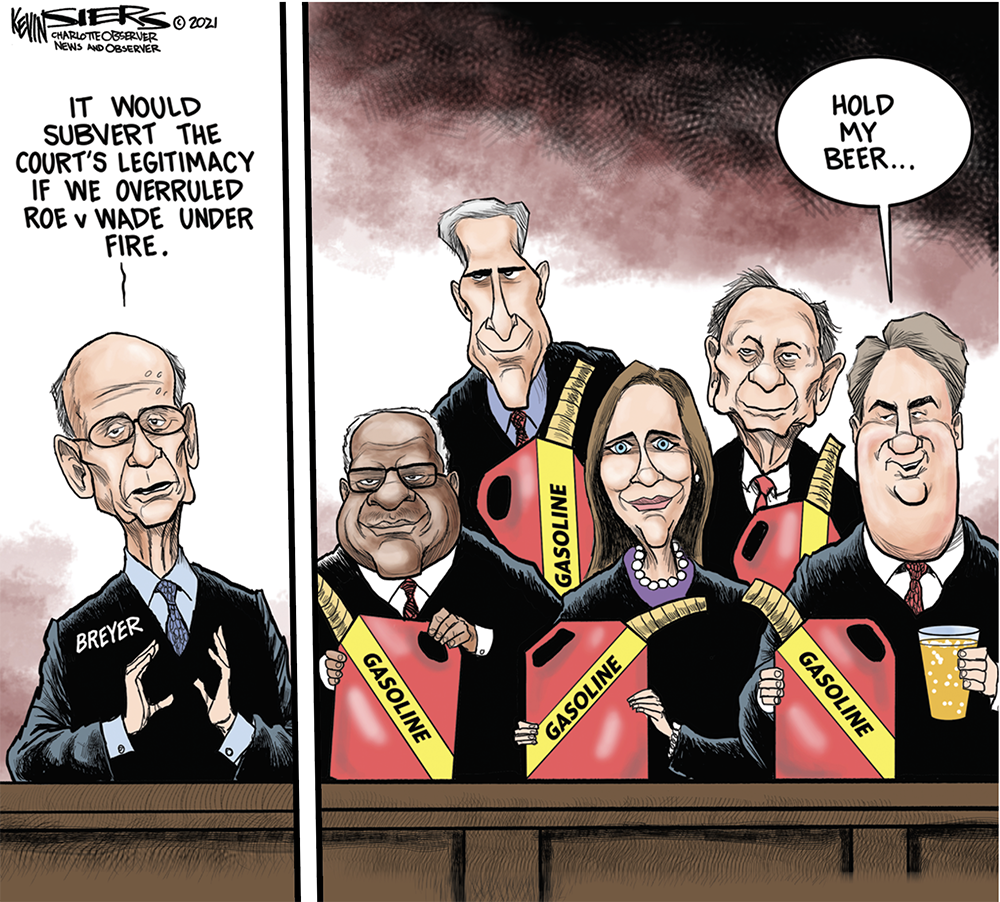CHURCH & STATE | The Supreme Court Is Trashing Our Rights. What Are We Going to Do?
 Photo by Ian Hutchinson on Unsplash
Photo by Ian Hutchinson on Unsplash The U.S. Supreme Court, once seen as the last bastion of protection for our rights, is instead laying waste to them. Stacked with ultra-conservatives, the high court seems especially intent on trashing seventy-plus years of jurisprudence upholding separation of church and state and ditching the right to legal abortion established in 1973’s Roe v. Wade.
It’s hard to tell where the court might strike next. At the height of the COVID pandemic, the court embraced a dangerous theory of religious freedom that fails to recognize the harm of unfettered transmission through religious services. The court is being asked to recognize a broad right to religious exemptions to mandatory vaccines. The justices also seem to be inching toward allowing discrimination in private and even public settings as long as it’s based on religion. Under this court, “religious freedom” has become a license to discriminate and ignore laws you dislike.
Marriage equality, which a differently configured court upheld in 2015, could be overturned or severely undermined. The justices are also increasingly ruling that religious schools and other institutions have a right to taxpayer support, even as they engage in appalling forms of discrimination.
Many Americans are understandably frustrated. Polls show that the court is perceived as a partisan institution and its standing is at an all-time low. But bad poll numbers aren’t likely to faze the court’s reactionary right-wing bloc. After all, the justices serve for life.
What’s to be done? Wringing your hands in despair or disengaging isn’t the answer. Instead, we must pursue a multi-pronged strategy:
Raise awareness. A recent poll by Politico/Morning Consult found that two-thirds of Americans either don’t know that there’s a very good chance that Roe will be overturned or believe it is unlikely that the court would do that.
How is this possible? Anti-abortion laws in the states received plenty of coverage in the media, and the oral argument in the current case, during which the conservative bloc clearly signaled what they intend to do, dominated the media cycle for days. For whatever reason, many Americans are tuning out this news. They will be in for a rude shock later this year when the court hands down its ruling.
 Highlight the political connection. We’re in this mess because of Donald Trump, who put three far-right justices on the court. Thus, a man who lost the popular vote in 2016 and soon proved himself unfit for office, has put his stamp on the court for perhaps a generation. Voters need to understand where the justices come from and realize that when they elect a president, they are, in a very real way, “electing” Supreme Court justices as well.
Highlight the political connection. We’re in this mess because of Donald Trump, who put three far-right justices on the court. Thus, a man who lost the popular vote in 2016 and soon proved himself unfit for office, has put his stamp on the court for perhaps a generation. Voters need to understand where the justices come from and realize that when they elect a president, they are, in a very real way, “electing” Supreme Court justices as well.
Explore court reform efforts. Court-packing is probably a non-starter and could have unintended consequences. A future Republican president could add even more justices, and the next Democrat could add more and so on. Soon the court would be too unwieldy. But that doesn’t mean other reform measures aren’t viable. A staggered form of term limits that ensures regular turnover on the bench, for example, has been proposed. A change like that would require a constitutional amendment. That’s always a challenge, but it’s time to start thinking big.
Use the democratic process when possible. Bad Supreme Court rulings can sometimes be addressed by legislation or, if necessary, a constitutional amendment. Again, amendments aren’t easy to pass, but the Constitution has been amended before. It is possible. It just takes time.
And speaking of time…
Recognize that we’re playing a long game. The Religious Right is on the verge of fatally undermining Roe. It took them nearly 50 years to do it. When the anti-abortion laws passed by their political allies were struck down, they went back to the drawing board and came up with new ones. They were in it for the long haul, and we on the other side need to take a lesson from that. Anti-abortion forces sometimes employed terror, harassment and violence. We must categorically reject that approach. But we do need to realize that defense of our liberties requires a dogged commitment – and we must understand that some of the work you do today may not pay off until years in the future. Indeed, you may not live long enough to see it come to fruition. Do it anyway.
Lest anyone accuse me of being Panglossian, let me be clear: I know the scale of the task ahead of us. It’s not going to easy – but protecting fundamental rights never is.
I fear for the future. History and common sense tell us that when rights are taken away, it’s the poor and disadvantaged who take the first, hardest hit. When the fetal viability standard established in Roe is no more, and states are free to do what they want, some will ban abortion and some will allow it. Rich people will travel to meet their needs; the poor will have many fewer options.
There are times in our history where the Supreme Court had to get ahead of the culture and drag everyone along with it–the Civil Rights era is one example. Many people in the country were not ready for school integration, but the high court recognized “separate but equal” for the unjust lie that it was and made the decision to put an end to it.
But there are also times when the culture must lead the court, when the people must use all legal means to instruct the court when it gets something wrong. Like it or not, we have entered one of those phases.
Get ready, because you will be called to stand up–and maybe even to lead.
